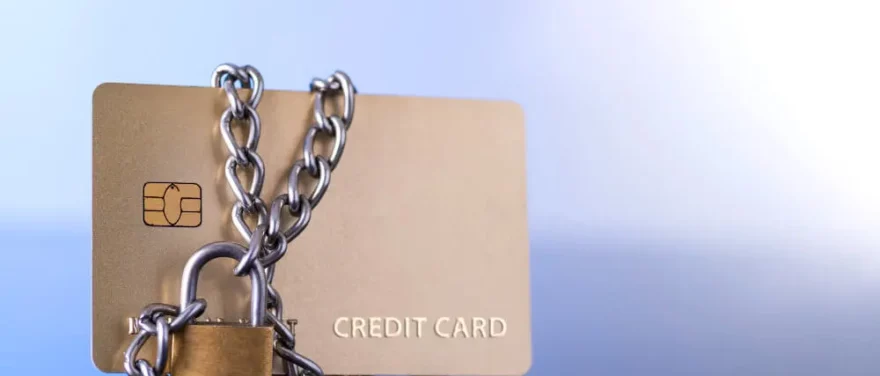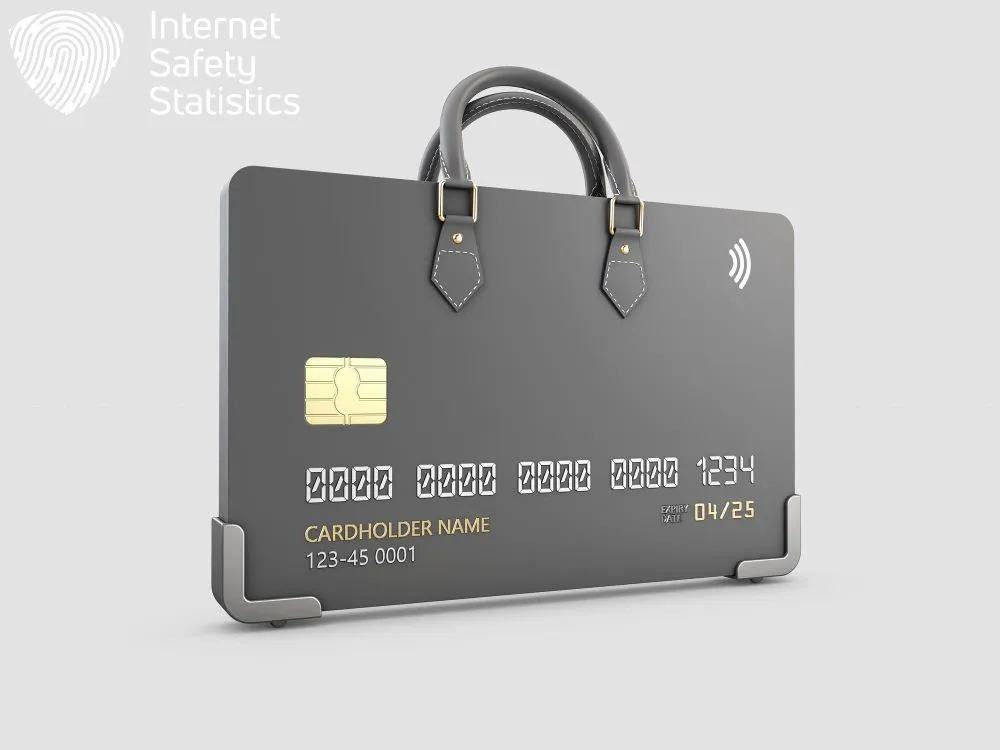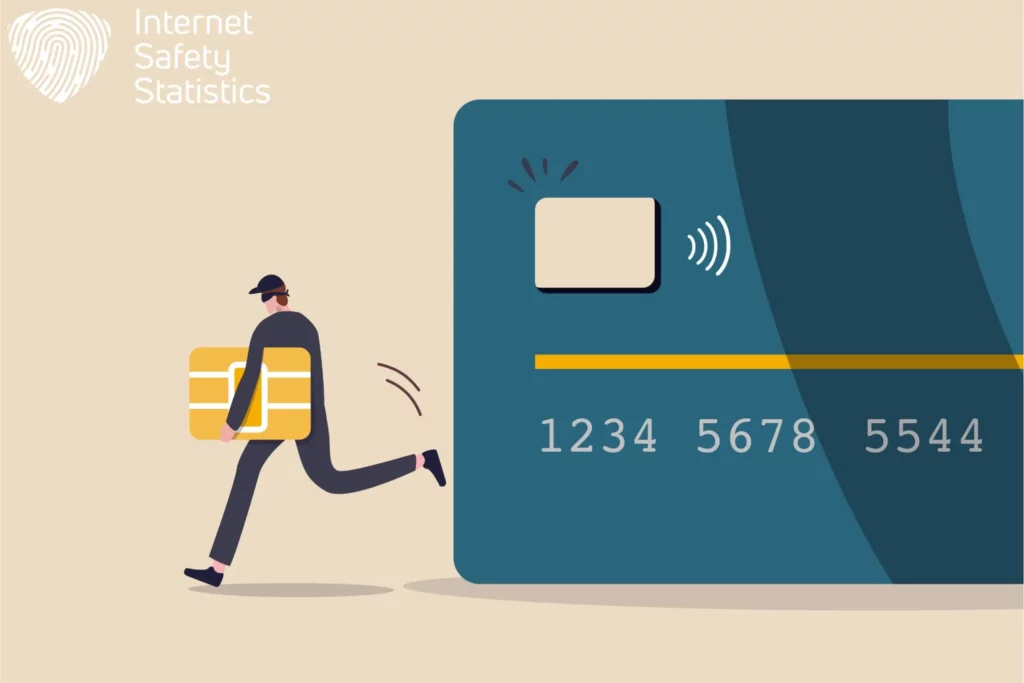
With every tap and purchase, a trail of data whispers your financial story. From corner coffee shops to global online empires, your credit card paints a portrait of your life. But who holds the brush? And are legal walls strong enough to protect your financial canvas? This article explores the intricate tapestry of credit card privacy laws woven across nations and industries, safeguarding your financial identity in a world hungry for data.
Historical Perspective: From Ink Stamps to Fingerprints
The story of credit card privacy isn’t just about legal codes and regulations; it’s a fascinating saga of technological evolution and evolving societal concerns. Back in the 1950s, swiping a plastic rectangle felt like magic, but the ink-stamped paper trails offered little protection.
Early concerns focused on physical theft like your card getting snatched from your wallet. The Fair Credit Reporting Act of 1970 became the first legal guardian, limiting access to credit reports and empowering consumers to dispute errors.
As technology galloped forward, metal tokens morphed into digital chips, and transactions leapt across continents at the speed of light. The 1980s and 90s saw a surge in data breaches, exposing the vulnerability of our digital footprints. Laws like the Gramm-Leach-Bliley Act (1999) emerged, forcing financial institutions to implement privacy measures and giving consumers control over how their data is shared.
But the story doesn’t end there. The rise of e-commerce in the 21st century brought new threats like phishing scams and identity theft. The Payment Card Industry Data Security Standard (PCI DSS) was born, setting global security benchmarks for credit card data.
Today, the battle continues as mobile wallets and contactless payments blur the lines between the physical and digital worlds. The fight for credit card privacy remains a dynamic dance, constantly adjusting to the ever-shifting digital landscape.
Key Components of Credit Card Privacy Laws

Credit card privacy laws aren’t just dry legal jargon; they’re the bricks and mortar of your financial fortress. Let’s explore the main elements that keep your sensitive information secure:
- Data Restriction: Imagine your credit card data like a treasure chest. These laws limit who can access this chest, requiring businesses to only collect and use your information for what’s necessary to process your transactions. They can’t just sell it off to the highest bidder!
- Data Security: Think of this as the alarm system for your financial fortress. These laws mandate strong security measures for storing and transmitting your data. Encrypted walls, digital padlocks, and constant vigilance against intruders are the norm.
- Transparency and Control: You, the owner of the treasure chest, deserve to know what’s inside and who can see it. These laws guarantee your right to access and correct your credit card information and make informed decisions about who can share it.
- Dispute Resolution: Even the most secure fortress can have a chink in the armour. If you suspect someone’s peeking at your information or if errors creep in, these laws provide avenues for resolving disputes and holding businesses accountable.
- Breach Notification: Imagine a smoke alarm blaring after an intrusion. These laws require businesses to promptly notify you if your data is compromised, giving you time to take necessary steps to protect yourself.
Remember, these are just the key components. Each law has its own specific details and regulations, constantly evolving to keep pace with evolving threats. But the central message remains clear: your financial information deserves protection, and these laws are your shield against unauthorised access and misuse.
Data Breaches and Identity Theft

In the realm of credit card privacy, data breaches are the enemy at the gates. Like thieves in the night, they seek to plunder your financial fortress, leaving chaos and uncertainty in their wake. Here’s where the fight gets real:
The Stakes: When a data breach occurs, it’s not just numbers and codes that are stolen—it’s your financial identity. Names, credit card numbers, expiry dates, security codes, even addresses and phone numbers can fall into the wrong hands. With this arsenal, criminals can:
- Go on shopping sprees: Racking up fraudulent charges on your card, leaving you with hefty bills and a damaged credit score.
- Open new accounts: Impersonating you to secure loans, credit cards, or other financial services, wreaking havoc on your financial reputation.
- Sell your information: Trading your precious data on the dark web, exposing you to further scams and exploitation.
The Battlefield: Data breaches can strike anywhere, from major retailers and banks to online businesses and healthcare providers. Recent high-profile examples include:
- Equifax (2017): Exposed the personal information of nearly 147 million Americans, including credit card details.
- Target (2013): Compromised over 40 million credit and debit cards during the holiday season.
- Home Depot (2014): Exposed 56 million payment cards, leading to widespread fraudulent charges.
The Consequences: The fallout from data breaches can be devastating for individuals, causing financial losses, stress, anxiety, and even reputational damage. Businesses face hefty fines, lawsuits, and loss of consumer trust. The fight against data breaches is a constant battle, demanding vigilance and continuous adaptation of privacy laws and security measures.
Legal Framework
Protecting your credit card information isn’t just a matter of good intentions; it’s enshrined in a robust legal framework. Credit card privacy laws act as the guardians of your digital vault, ensuring businesses handle your data responsibly and with due care. Let’s explore some key players:
- The Fair Credit Reporting Act (FCRA): This cornerstone law regulates how credit reporting agencies collect, maintain, and share your credit information. It gives you the right to access and dispute errors in your credit report, protecting you from financial discrimination based on inaccurate information.
- The Gramm-Leach-Bliley Act (GLBA): This law focuses on privacy within the financial services industry. It requires financial institutions to disclose their data-sharing practices and gives you control over who can access your financial information. You can opt out of certain data-sharing arrangements, ensuring your financial details remain under your purview.
- The Payment Card Industry Data Security Standard (PCI DSS): This set of global security standards establishes how companies that store, process, or transmit credit card data must protect it. Think of it as your digital vault’s high walls and intricate locks. Every merchant, bank, and payment processor handling your card must adhere to these strict guidelines to prevent data breaches.
- State-level laws: Beyond federal laws, many states have enacted their own credit card privacy regulations. These can add additional layers of protection and vary in scope. It’s important to familiarise yourself with the specific laws in your state for a comprehensive understanding.
- Enforcement: These laws are backed by teeth. Regulatory agencies like the Consumer Financial Protection Bureau (CFPB) and the Federal Trade Commission (FTC) have the power to investigate violations and impose fines on companies that fail to protect consumer data. Additionally, individuals can file lawsuits against businesses for privacy violations, seeking compensation for damages incurred.
Remember, this legal framework constantly evolves as technology advances and threats become more sophisticated. Keeping up with these changes is crucial for maintaining a secure financial fortress.
Rights and Responsibilities

Navigating the landscape of credit card privacy involves a nuanced interplay between rights and responsibilities. Mastery of both aspects not only empowers individuals to maintain control over their financial information but also contributes to cultivating a robust and secure transaction environment.
Your Rights
As a consumer, you hold the keys to your digital vault. Here are some key rights granted by credit card privacy laws:
- Access and Correction: You have the right to view your credit report and dispute any errors. This ensures your credit score accurately reflects your financial history.
- Data Sharing Control: You can choose who can access your credit card information. Opt-out mechanisms empower you to limit the sharing of your data for marketing purposes.
- Breach Notification: If your data is compromised in a breach, you have the right to be informed promptly, allowing you to take the necessary steps to protect yourself.
- Dispute Resolution: If you encounter billing errors or unauthorised charges, you have the right to dispute them with your credit card company. Fair procedures are in place to ensure your concerns are addressed promptly and fairly.
Your Responsibilities
While laws grant you rights, exercising them effectively requires proactive measures. Here are some key responsibilities:
- Password Hygiene: Secure your online accounts with strong passwords and two-factor authentication to deter unauthorised access.
- Review Statements: Regularly monitor your credit card statements for any suspicious activity. Early detection minimises potential damage.
- Reporting Errors: Promptly report errors or unauthorised charges to your credit card company to initiate dispute resolution and safeguard your finances.
- Staying Informed: Keep yourself updated about evolving data privacy laws and security threats. Awareness empowers you to make informed decisions about your financial information.
Remember, this is a shared responsibility. Consumers and financial institutions both need to play their part in creating a secure environment for your credit card information. By understanding your rights and fulfilling your responsibilities, you can dance gracefully amidst the ever-changing landscape of credit card privacy.
Emerging Technologies and Challenges
Credit card transactions are no longer confined to plastic cards and swiping machines. Biometric authentication, mobile payments, and the Internet of Things (IoT) are rapidly rewriting the script, but these advancements bring novel challenges to safeguarding our financial data. Let’s dive into this new frontier:
Biometric Boom
Fingerprint and facial recognition are replacing PINs, promising frictionless payment experiences. However, concerns linger around the permanence and potential misuse of sensitive biometric data. Who owns this data? How secure are storage and verification systems? These questions demand robust legal frameworks and technological safeguards to prevent biometric vulnerabilities.
Mobile Maze
Our smartphones are becoming digital wallets, housing credit card information for contactless payments and in-app purchases. While convenient, data breaches and malware threats targeting mobile devices expose users to a new realm of vulnerability. Secure operating systems, robust app vetting, and consumer vigilance are crucial for navigating this mobile maze.
IoT Enigma
As refrigerators order groceries and thermostats pay electric bills, the lines between personal data and financial information blur. The sheer volume of data generated by interconnected devices opens new avenues for data profiling and targeted advertising. Establishing clear control mechanisms and data minimisation practices for IoT devices is essential for protecting consumer privacy in this interconnected world.
Challenges on the Horizon
The landscape of credit card privacy faces constant evolution. Artificial intelligence and machine learning algorithms, while offering fraud detection benefits, raise concerns about automated profiling and potential biases. The increasing use of virtual currencies and blockchain technology demands new regulatory frameworks to ensure transparency and consumer protection.
Navigating these challenges requires constant adaptation and collaboration. Regulators need to stay ahead of the curve, crafting agile legal frameworks that address emerging threats. Technology companies must prioritise data security and user privacy by design. Meanwhile, consumers need to be informed and vigilant, adopting secure practices and demanding transparency from the companies they entrust with their financial information.
By acknowledging the complexities and collaborating to find solutions, we can ensure that emerging technologies empower, not endanger, financial privacy in the era of smart devices and digital transactions.
Understanding credit card privacy laws is no longer optional; it’s essential. These laws are the guardians of our financial fortress, ensuring our information is protected from the ever-evolving threats of the digital age. But this is not a passive journey. We, as consumers, hold the key to our financial security.
By exercising our rights and fulfilling our responsibilities, we can navigate the complexities of emerging technologies and ensure the future of credit card privacy is one of empowerment and protection.
